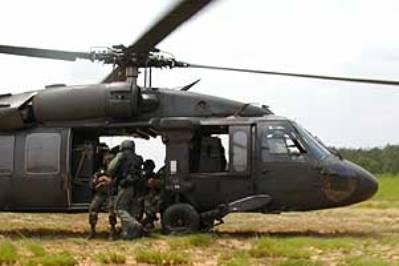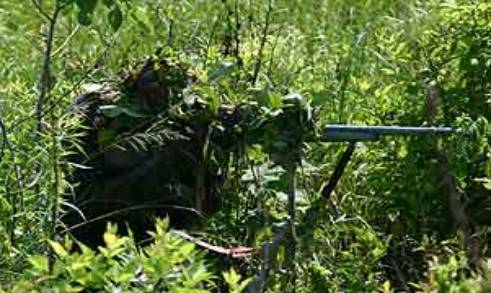
Advanced Research & Technology Ltd
Defence

The application of new 'Intelligent Video Systems', combined with modern Information Technology provides a means of detecting and tracking potential 'targets'. Visual data gathered by such systems can also be instrumental in providing information leading to location and capture.
In 'traditional' surveillance systems, reliance is placed on human eyes and brains, either to maintain a physical lookout or to assess raw video on monitor screens. In both cases the visual information requires constant vigilance to detect security breaches, yet the very act of concentrating on areas where usually only routine events are happening, can produce lethargy and boredom in a relatively short time.
The objective of Intelligent Video Systems is to provide a means of giving reliable alert information to surveillance personnel when a pre-defined set of video events are detected by the system. Video is initially captured by thermal image cameras. The video images from these cameras are then processed by 'Moving Image Separation Technology' (MIST) developed by AR&T Ltd. which will, when pre-defined moving image rules are met, raise an alert condition that will bring the operator's attention to the images in question. In other words, the system will tell the operator when security is about to be compromised.
Intelligent Video Systems benefit users in two significant ways. By monitoring images 100% of the time, they reduce the chance that surveillance personnel may miss a security breach, as they usually have a wide field of view or more than one screen to monitor, and attention has to be shared. Therefore, the Intelligent Video System is more reliable. Secondly, by reducing the fatigue caused by concentration on what is usually a monotonous task, surveillance personnel can take on a wider scope of operations.
MIST is a new and sophisticated object detection and tracking system that is capable of providing an early indication of intrusion from objects (including people) entering or moving through restricted areas or routes. The system detects and tracks objects that obey a set of qualifying rules. When these objects cross 'Virtual Trip Wires' placed in the video image by the system administrator, the system raises an alert for the operator and gives a clear and precise visual presentation for the cause of the alert.
The application of this new type of motion detection significantly reduces the number of false alarms and increases the accuracy of detection compared to standard motion detection systems. MIST can be used in isolation or as part of a networked system.
A MIST processing unit, in conjunction with a thermal camera, exhibits properties offering benefits over RADAR for medium range detection of objects of all sizes. For example, the system is not confused by natural ground based objects (clutter) and is capable of tracking small non-metallic objects. Fitted with the correct thermal camera the system provides a full 24-hour capability even when darkness, fog and rain obscure normal vision.
The system contains a powerful 3D mapping function, converting two-dimensional camera images into 3D mathematical models. This function, in conjunction with MIST's detection, separation and tracking capability allows targets to be shown in a screen map in real time. Tailback information of longitude, latitude, bearing and range can be inserted in the view.
The 3D function is currently best suited to relatively flat terrain with minor undulations of a metre or so. 3D mapping to heavily undulating terrain is under development. The function is currently ideally suited to applications requiring detection over water.
Area maps can also be used to indicate the position and fields of view of cameras. Operators can select areas to view by clicking on the position with the cursor. The view from any camera that is able to cover that area will be shown on the operator’s screen.
There is no limit to the number of cameras. Vast areas can be covered, with detection ranges up to 20Km using thermal imaging cameras.

